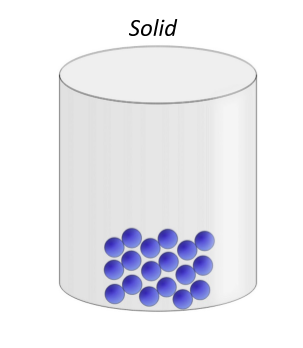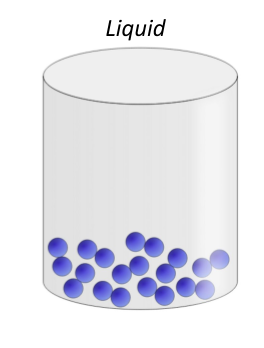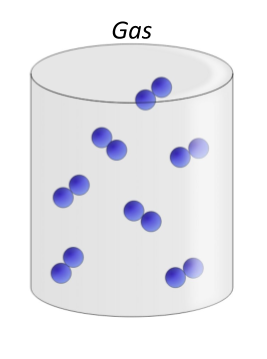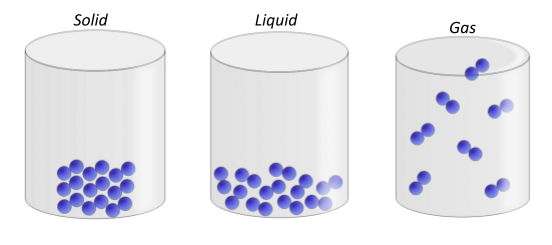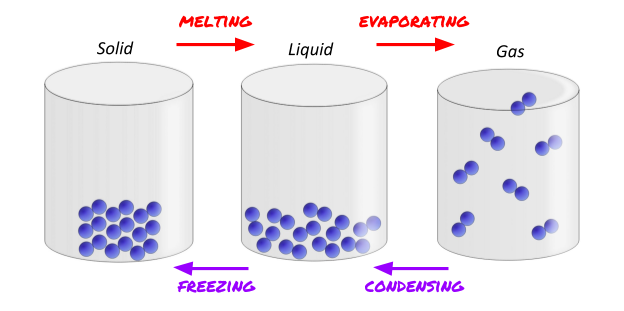Types of Matter
States of Matter
Materials can be in 3 different forms, solid, liquid or gas. The state of matter the substance is in depends on how strong the forces of attraction are between the molecules.
The strength of intermolecular forces depends on:
- The structure of the substance
- The temperature
- The pressure
The way that particles interact with each other is actually very very complicated BUT we can presume a few things that makes it a lot easier.
We will presume:
- Each particle is small
- Each particle is a solid sphere
- There are lots of particles
Solids
Solids have strong intermolecular forces holding the particles together. The particles are very close together, stuck in fixed positions but vibrating on the spot. Solids keep their shape and volume since the particles don’t move from their positions.
As the solid heats up, the particles vibrate more aggressively (and when they vibrate so much that they break free from their positions, this is when the substance has melted to a liquid!)
Liquids
In liquids, the forces of interaction between particles are weak. The particles are randomly arranged and move slowly past each other. However, they stick close together, due to the weak forces of interaction.
Liquids do not change their volume but do change their shape to fill the bottom of the container.
The liquid particles are constantly moving. The hotter the liquid gets, the faster the particles move. When the particles move so fast that they break free of their intermolecular forces, the substance turns to a gas (evaporates).
Gas
In gases, there are no forces of interaction between particles. The particles are randomly arranged and move quickly and randomly with lots of energy.
Gases change their volume and shape to fill the whole of the container.
The gas particles are constantly moving. The hotter the gas gets, the faster the particles move.
Summary
Limitations of particle theory - HIGHER
In real life, the particles in a solid, liquid or gas are not actually like how we talk about them. However, to learn how particles actually interact in real life, you’ll need a physics degree! We learn a simplified version of particle theory, but you will need to know why this theory is wrong.
Particle theory is wrong since:
- Particles are not spheres in real life
- Particles are not inelastic in real life
- Particles are not solid in real life
- Particles are atoms , ions or molecules (in all shapes and sizes)
- Doesn’t show the forces acting between particles
- Distance between particles is not to scale.
Changing State
- What are the three main states of matter?
- Your answer should include: Solids / Liquids / Gases / Solid / Liquid / Gas
- Of the three main states of matter, which particles have the highest energy?
- Gas
- What is the process called when a gas turns to a liquid?
- Condensation
